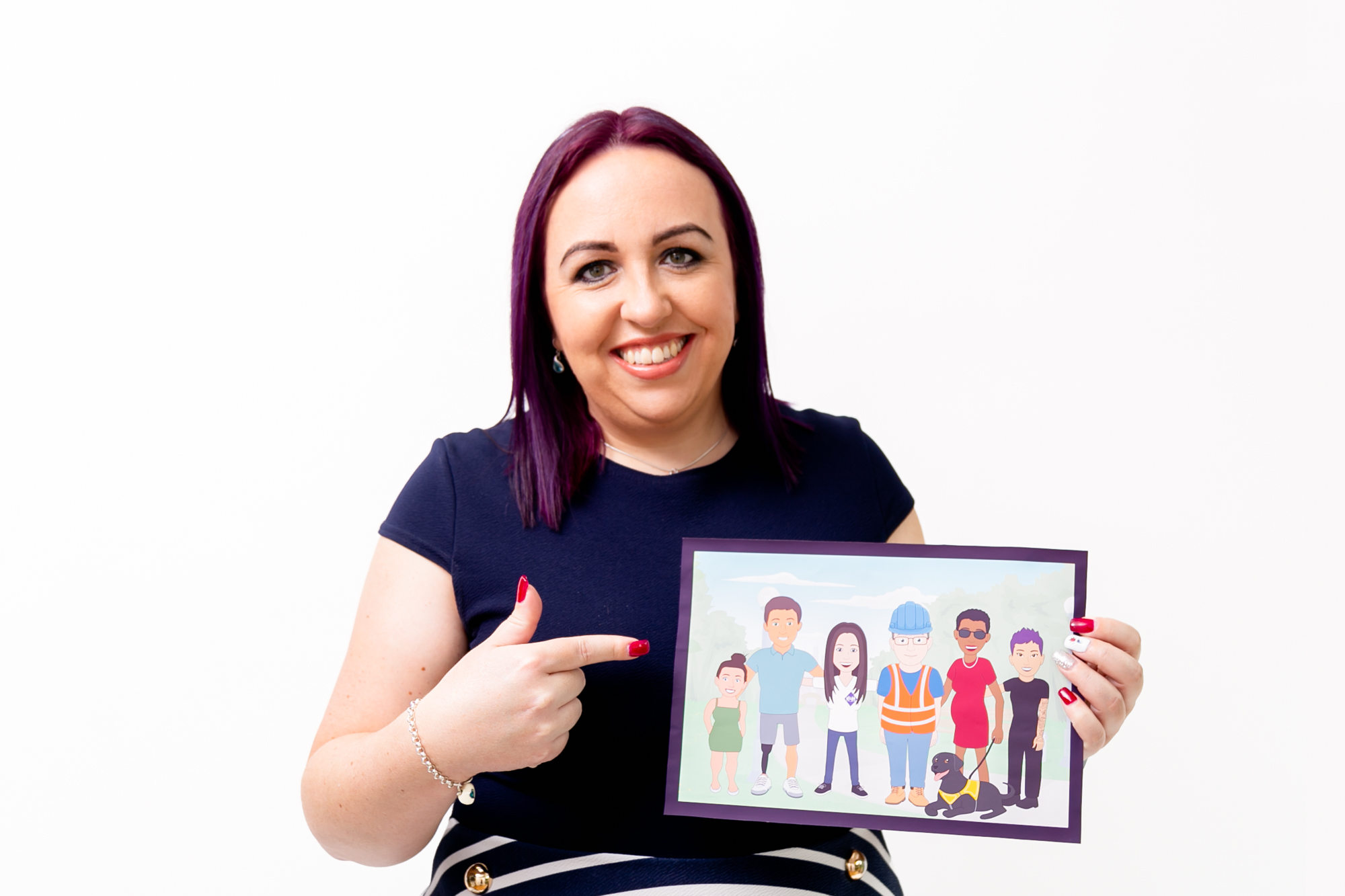'I’m a human being' by Jodie Greer
People often ask me why I’m so passionate about disability inclusion, and why I would’ve left a very successful corporate career to commit my professional life to improving inclusion in other companies, and they’re particularly perplexed when I tell them I’m currently non-disabled. Well, the answer is pretty easy – I’m human too.
4 minute read
The reality is that my passion for disability inclusion goes back to childhood. My first memory of being irritated by ableism is when I was about 6 years old, and my teacher asked me to sit with a particular class mate – who I’m still in contact with – to translate for him. My friend has a speech impairment, he wasn’t speaking a foreign language. I did as I was asked, because I kind of had to and because I wanted to help my friend, but I was really annoyed with the ‘grown up’ in the room. My thoughts were ‘I’m the child and I understand him, so if you just put a bit of effort in you would too’.
I don’t consider myself an ally, because I don’t believe this is an ‘us and them’ scenario. I like to think of myself more as a decent human being.

However, even if you would consider me an ally, here’s a thought, like many people:
- As a white person, I will call out racism if I see or hear it, no matter what colour skin the person it was aimed at has.
- As a cis-gender woman, I will call out transphobia if I see or hear it.
- As a heterosexual woman, I will call out homophobia if I see or hear it.
- As a confident woman who has worked in very male dominated worlds for many years, I will call out sexism if I see or hear it.
Now, I know many people who feel strongly on the abhorrent behaviours listed above, and will take action to help remove them from the workplace and society – wonderful!
But sadly, the number of currently non-disabled people who take the time to educate themselves on disabilities and accessibility, and the barriers our own behaviours and practices create, is far lower – sad times!
The irony is, disability is the one area of diversity that every single one of us can join at any time, and the reality is we all will at some time in our lives.
Did you know that more than 80% of disabilities are acquired in adult life?
We all play a key role in creating inclusive and accessible workplaces, and I wanted to help educate more people and more organisations to understand what this really means, how they go about it and to recognise the value of having disabled colleagues and customers.
That’s why I left the corporate world to start Be #PeopleSmart, to provide consultancy services for disability inclusion and accessibility, and that’s why I spent a year of my life, at my own expense, to create the Be #PeopleSmart Disability Inclusion Maturity Model and to give it to the world for free!
I’m very proud of the maturity model, I knew it was needed for several years, but I wasn’t able to commit the time needed to create it, so I knew it would be one of my first priorities when I started my own consultancy.
It provides granular detail for 10 different business areas to remove the guess work, and it comes with helpful user-friendly guidance that enables organisation to self-assess how well they’re doing, where they’d like to get to, and to identify the actions to enable them to reach their goals.
I support businesses across all areas to achieve disability inclusion and accessibility, and I bring knowledge of lived experience from thousands of disabled people to the table. I have learned so much from people over the past 15 years of focusing on disabilities in the workplace, and I continue to learn from people every day.
My question to anyone reading this article is, can you hand on heart say you are doing enough for disability inclusion?
Asking for help is a strength, and I’m here to help you.
So, whether you need help with:
- Making your recruitment practices and policies inclusive.
- Reaching your whole audience with inclusive and accessible communication.
- Seeking support from your senior leadership teams.
- Updating your diversity, equity, and inclusion (DEI) strategic plans to make them truly inclusive.
- Educating your employees on disability confidence.
- Ensuring your physical environments are accessible – there’s far more to access than ramps and toilets.
- Designing digital products with accessibility in mind – I have a great tried and tested way of bringing these requirements to life.
- Creating or developing your disability staff networks or employee resource groups (ERG).
- Ensuring your health and safety practices care for everyone and don’t only consider accessibility in an emergency.
Take a look at the Be #PeopleSmart website to find out more about us.
Take a look at our service brochure, to see how we can help your business to achieve long-term success.
Take a look at our tools and resources to help you reach your goals.
Reach out to me on LinkedIn, I’m always sharing helpful tips.
It’s nearly 2023 and there’s still so much to be done, are you going to take action to make the world work for the people in it?
As I always say, there’s no diversity without disability!

